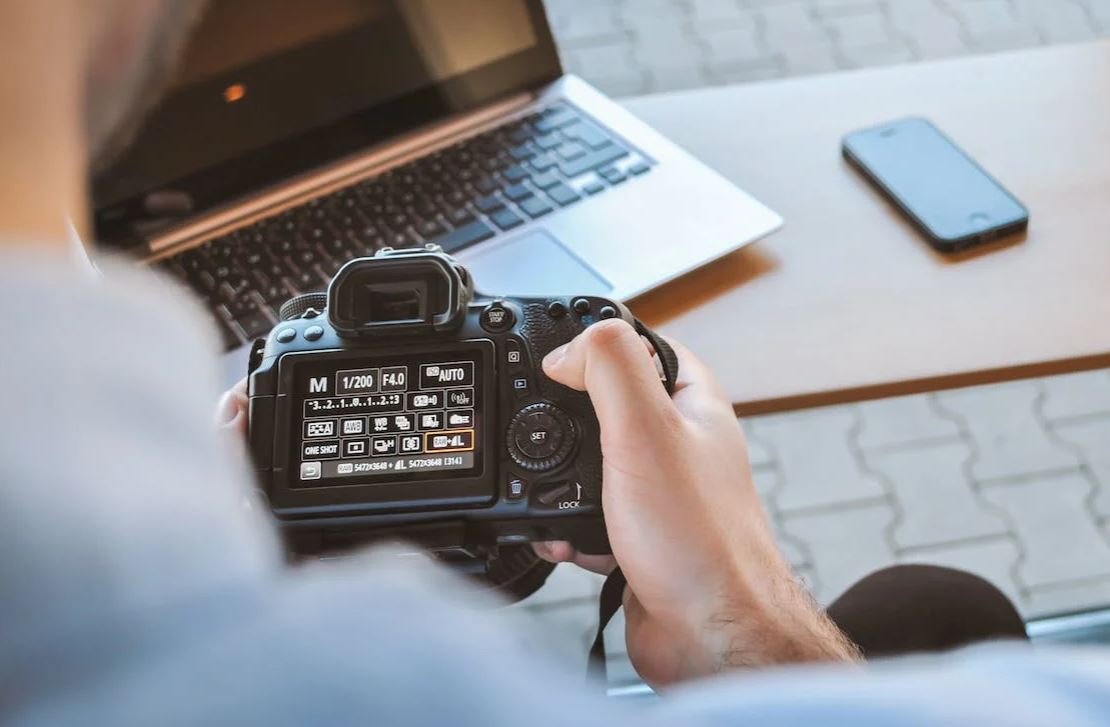Podcast Microphone
Are you considering starting your own podcast? One of the most important factors that can make or break the success of your podcast is the microphone you use. The right podcast microphone can significantly improve the sound quality of your recordings, enhancing the overall listening experience for your audience. In this article, we will explore the different types of podcast microphones available, their features, and provide recommendations for some of the best options on the market.
Key Takeaways:
- Choosing the right podcast microphone is crucial for audio quality.
- Dynamic, condenser, and ribbon microphones are commonly used for podcasting.
- Consider factors such as budget, recording environment, and intended use when selecting a podcast microphone.
- Popular podcast microphones include the Shure SM7B, Audio-Technica ATR2100x-USB, and Rode PodMic.
Types of Podcast Microphones
There are several types of microphones commonly used for podcasting: dynamic, condenser, and ribbon microphones. Dynamic microphones are durable, resistant to handling noise and plosives, making them ideal for podcasters who are not in a controlled recording environment. Condenser microphones, on the other hand, are more sensitive and offer a greater frequency response, making them ideal for capturing detailed and high-quality audio. Lastly, ribbon microphones have a unique sound signature, often described as smooth and vintage, which can add character to certain types of podcasts.
In terms of connectivity, most podcast microphones come in XLR or USB options. *USB microphones offer plug-and-play convenience, making them user-friendly for beginners, while XLR microphones require an audio interface or mixer for connection, providing more flexibility and customization options for advanced users*
Premium Podcast Microphones
If you are looking for top-of-the-line podcast microphones, here are some recommendations:
- Shure SM7B: Known for its exceptional sound quality and versatility, the SM7B is a popular choice among professional podcasters.
- Audio-Technica ATR2100x-USB: A budget-friendly option with both XLR and USB connections, perfect for podcasters on a tight budget.
- Rode PodMic: Designed specifically for podcasting, the PodMic offers excellent performance at an affordable price point.
| Premium Podcast Microphones | Price Range |
|---|---|
| Shure SM7B | $399 |
| Audio-Technica ATR2100x-USB | $99 |
| Rode PodMic | $99 |
Entry-Level Podcast Microphones
If you are just starting out or have a limited budget, there are great options available:
- Audio-Technica AT2005USB: A versatile microphone with both USB and XLR connections, suitable for beginners.
- Samson Q2U: Another affordable option with USB and XLR connections, known for its ease of use and quality performance.
- Blue Yeti USB Microphone: A popular choice for podcasting and streaming, offering multiple polar patterns for various recording situations.
| Entry-Level Podcast Microphones | Price Range |
|---|---|
| Audio-Technica AT2005USB | $79 |
| Samson Q2U | $59 |
| Blue Yeti USB Microphone | $129 |
Conclusion
When it comes to podcasting, the microphone you choose can significantly impact the quality of your recordings. Consider your budget, recording environment, and intended use to determine the best podcast microphone for your needs. Whether you opt for a premium or entry-level option, the key is to find a microphone that suits your voice and enhances the overall audio experience for your audience.

Common Misconceptions
Podcast Microphone
Many people have misconceptions when it comes to choosing the right microphone for podcasting. It’s important to understand the common myths surrounding podcast microphones to make an informed decision for your own podcasting needs.
- All microphones are the same:
- XLR is better than USB:
- Expensive microphones are always better:
Podcast Recording Space
Another common misconception is around the importance of having a dedicated recording space for your podcast. Let’s delve into some of these misconceptions.
- You need a professional studio:
- A quiet room is all you need:
- Background noise can easily be edited out:
Podcast Editing
Editing plays a crucial role in producing a high-quality podcast. However, people often have misconceptions about the editing process and its complexity.
- Editing takes too much time:
- You need expensive software to edit:
- Edit every little mistake:
Podcast Promotion
Once your podcast is recorded and edited, another important step is promoting it to reach a wider audience. Let’s debunk some common misconceptions about podcast promotion.
- Promotion is not necessary:
- Social media promotion is enough:
- Guest interviews alone will bring growth:
Podcast Monetization
Many podcasters hope to monetize their podcasts, but there are misconceptions about the various ways it can be achieved. Here are some common misconceptions about podcast monetization.
- Advertisements are the only way to monetize:
- Monetization happens quickly:
- Listeners will pay for premium content:

Overview of Podcast Microphones
Podcasts have become increasingly popular in recent years, with more and more people hosting their own shows. One essential tool for podcasting is a high-quality microphone. In this article, we will explore 10 different types of podcast microphones and their key features, helping you find one that suits your needs.
Microphone Comparison
Below is a comparison of ten podcast microphones, highlighting their specifications and notable features.
| Microphone | Type | Frequency Response | Sensitivity | Connectivity |
|---|---|---|---|---|
| Blue Yeti | Condenser | 20Hz-20kHz | 120dB | USB |
| Shure SM7B | Dynamic | 50Hz-20kHz | -59dB | XLR |
| Rode Procaster | Dynamic | 75Hz-18kHz | -56dB | XLR |
| Audio-Technica ATR2100x | Dynamic | 50Hz-15kHz | -54dB | USB/XLR |
| Electro-Voice RE20 | Dynamic | 45Hz-18kHz | -48dB | XLR |
| Samson Q2U | Dynamic | 50Hz-15kHz | -54dB | USB/XLR |
| Heil PR40 | Dynamic | 28Hz-18kHz | -53dB | XLR |
| Rode NT-USB | Condenser | 20Hz-20kHz | 110dB | USB |
| AKG P220 | Condenser | 20Hz-20kHz | 20mV/Pa | XLR |
| Sennheiser MD 421 II | Dynamic | 30Hz-17kHz | -54dB | XLR |
Microphone Polar Patterns
The polar pattern of a microphone determines its sensitivity to sound from different directions. Here are the common types of polar patterns used in podcasting:
| Polar Pattern | Description |
|---|---|
| Cardioid | Picks up sound from the front and rejects sound from the rear. |
| Bi-Directional/Figure-8 | Picks up sound from the front and back, effectively ignoring sounds from the sides. |
| Omnidirectional | Picks up sound equally from all directions. |
Microphone Pop Filters
Pop filters are used to reduce plosive sounds (like “p” and “b” sounds) that can create distortion in recordings. Here are three popular pop filters for podcasting:
| Pop Filter | Type | Compatibility | Size |
|---|---|---|---|
| Stedman Proscreen XL | Mesh | Universal | 6 inches |
| On-Stage ASFSS6GB | Dual-layer | Universal | 6 inches |
| Aokeo Professional Microphone Pop Filter | Nylon | Universal | 6 inches |
Microphone Stands
A stable and adjustable stand is crucial for maintaining proper microphone positioning during podcasting. Here are three popular microphone stands:
| Mic Stand | Type | Height Adjustment | Base Size |
|---|---|---|---|
| Heil Sound PL-2T Overhead Broadcast Boom | Boom Arm | 40″-72″ | 6 inches |
| Rode PSA1 Swivel Mount Studio Microphone Boom Arm | Boom Arm | 33″-48″ | 4.75 inches |
| On-Stage MS7701B Tripod Microphone Stand | Tripod | 36″-63″ | 25 inches |
Microphone Preamps
A microphone preamp boosts the microphone’s weak signal to a level suitable for recording or broadcasting. Here are three top-rated preamps for podcasting:
| Preamp | Type | Impedance | Phantom Power |
|---|---|---|---|
| Focusrite Scarlett 2i2 | USB Audio Interface | 3kΩ | Yes |
| Presonus Studio Channel | Tube Preamp | 1.3kΩ | Yes |
| Cloudlifter CL-1 Mic Activator | Line Driver/Preamp | 6kΩ | No |
Microphone Accessories
Various accessories can enhance your podcasting setup. Here are three must-have microphone accessories:
| Accessory | Type | Compatibility |
|---|---|---|
| Shock Mount | Holder | Microphones with XLR connectors |
| Pop Filter | Filter | Universal |
| Headphones | Over-Ear | Universal |
Microphone Prices
Podcast microphones come at varied price points. Here are three microphones available at different price ranges:
| Microphone | Price Range |
|---|---|
| Audio-Technica ATR2100x | $100-$150 |
| Rode Procaster | $200-$250 |
| Shure SM7B | $350 and above |
Podcasters’ Choice
Finally, here are three microphones highly recommended by experienced podcasters:
| Microphone | Reason for Recommendation |
|---|---|
| Shure SM58 | Durable and versatile, suitable for various recording environments. |
| Rode PodMic | Offers excellent sound quality at an affordable price. |
| Electro-Voice RE320 | Great for capturing both vocals and musical instruments with precision. |
Conclusion
Choosing the right podcast microphone is crucial for delivering professional and engaging audio content. In this article, we have discussed various options and features of microphones, including their types, polar patterns, accessories, and pricing. Whether you are a beginner or a seasoned podcaster, there is a microphone that will meet your specific needs and budget. Make an informed choice and start creating incredible podcasts that captivate your audience.
Frequently Asked Questions
What is a podcast microphone?
A podcast microphone is a type of microphone specifically designed for recording audio for podcasts. These microphones are often built with high-quality components that capture clear and professional-sounding audio.
Why do I need a dedicated microphone for podcasting?
A dedicated podcast microphone helps to improve the audio quality of your podcast recordings. Unlike built-in microphones on laptops or smartphones, podcast microphones are optimized for capturing voice clearly and accurately, reducing background noise and improving overall sound quality.
Do I need a USB or XLR microphone for podcasting?
Both USB and XLR microphones can be used for podcasting, but the choice depends on your specific needs. USB microphones are plug-and-play and can be connected directly to a computer, while XLR microphones require an audio interface or mixer for connection. XLR microphones generally offer more versatility and higher audio quality.
What features should I look for in a podcast microphone?
When choosing a podcast microphone, consider features such as directional pattern (cardioid or condenser), frequency response, sensitivity, durability, and compatibility. Additionally, consider if the microphone requires additional equipment like a shock mount or pop filter.
How much should I spend on a podcast microphone?
The price range for podcast microphones can vary greatly. There are quality options available in various price ranges, starting from around $50 and going up to several hundred dollars. Consider your budget and requirements when making a decision.
Can I use a smartphone as a podcast microphone?
While it is possible to use a smartphone as a podcast microphone, the quality may not be as good as dedicated podcast microphones. Smartphones’ built-in microphones are designed for general purposes and may not provide the same level of audio clarity as dedicated podcast microphones.
Do I need additional accessories for my podcast microphone?
Additional accessories like a microphone stand, shock mount, pop filter, or a windscreen can enhance your podcasting setup. These accessories help in reducing vibrations, controlling plosive sounds, and minimizing wind noise for better audio quality.
How do I connect a podcast microphone to my computer?
If you have a USB microphone, you can directly connect it to your computer using a USB port. XLR microphones require an audio interface or mixer, which connects to your computer via USB or audio inputs.
Can I use a podcast microphone for other audio recording purposes?
Yes, a podcast microphone can be used for various audio recording purposes beyond podcasting. They are suitable for voiceovers, interviews, streaming, gaming, and other applications where high-quality audio recording is desired.
What are some popular podcast microphone brands?
There are many reputable podcast microphone brands available, including Shure, Audio-Technica, Rode, Blue, Sennheiser, and Neumann. Each brand offers a range of models with different features and price points to choose from.


Leave a Reply